Cloudflare’s Response to CSAM Online

Responding to incidents of child sexual abuse material (CSAM) online has been a priority at Cloudflare from the beginning. The stories of CSAM victims are tragic, and bring to light an appalling corner of the Internet. When it comes to CSAM, our position is simple: We don’t tolerate it. We abhor it. It’s a crime, and we do what we can to support the processes to identify and remove that content.
In 2010, within months of Cloudflare’s launch, we connected with the National Center for Missing and Exploited Children (NCMEC) and started a collaborative process to understand our role and how we could cooperate with them. Over the years, we have been in regular communication with a number of government and advocacy groups to determine what Cloudflare should and can do to respond to reports about CSAM that we receive through our abuse process, or how we can provide information supporting investigations of websites using Cloudflare’s services.
Recently, 36 tech companies, including Cloudflare, received this letter from a group of U.S Senators asking for more information about how we handle CSAM content. The Senators referred to influential New York Times stories published in late September and early November Continue reading
Thinking about color
Color is my day-long obsession, joy and torment - Claude Monet


Over the last two years we’ve tried to improve our usage of color at Cloudflare. There were a number of forcing functions that made this work a priority. As a small team of designers and engineers we had inherited a bunch of design work that was a mix of values built by multiple teams. As a result it was difficult and unnecessarily time consuming to add new colors when building new components.
We also wanted to improve our accessibility. While we were doing pretty well, we had room for improvement, largely around how we used green. As our UI is increasingly centered around visualizations of large data sets we wanted to push the boundaries of making our analytics as visually accessible as possible.
Cloudflare had also undergone a rebrand around 2016. While our marketing site had rolled out an updated set of visuals, our product ui as well as a number of existing web properties were still using various versions of our old palette.
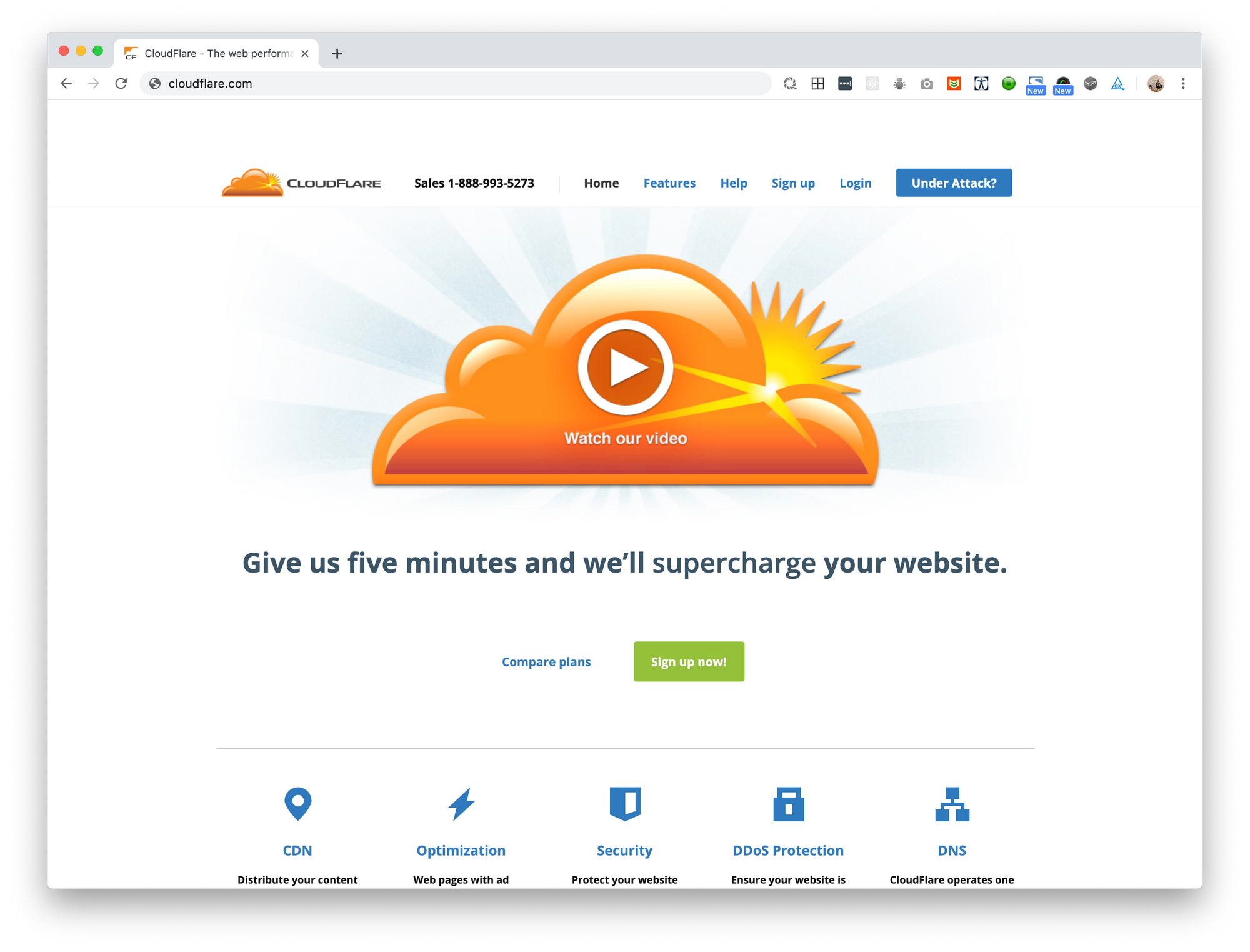
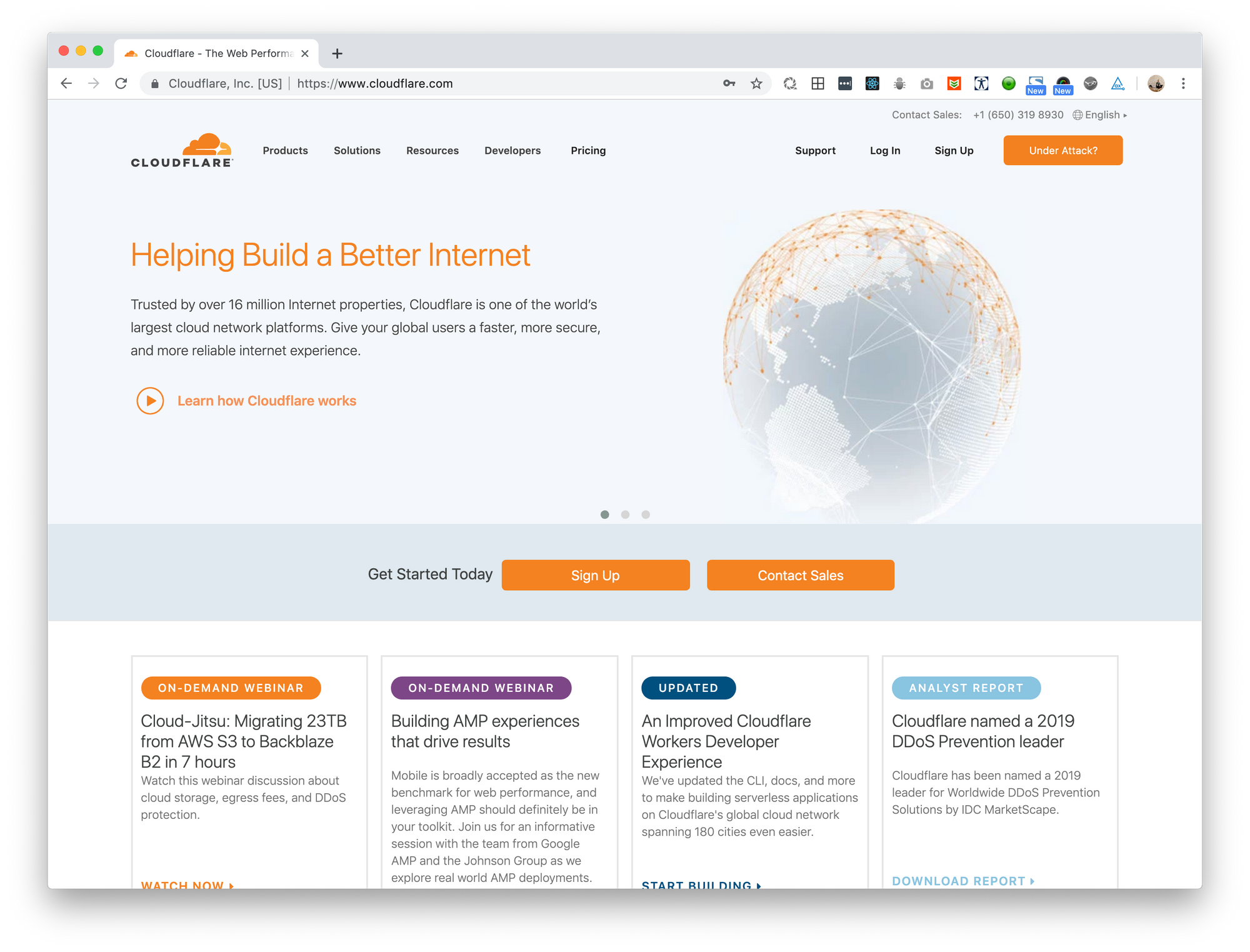
Our product palette wasn’t well balanced by itself. Many colors had been chosen one or two Continue reading
The Serverlist: Full Stack Serverless, Serverless Architecture Reference Guides, and more

Check out our tenth edition of The Serverlist below. Get the latest scoop on the serverless space, get your hands dirty with new developer tutorials, engage in conversations with other serverless developers, and find upcoming meetups and conferences to attend.
Sign up below to have The Serverlist sent directly to your mailbox.
A History of HTML Parsing at Cloudflare: Part 2
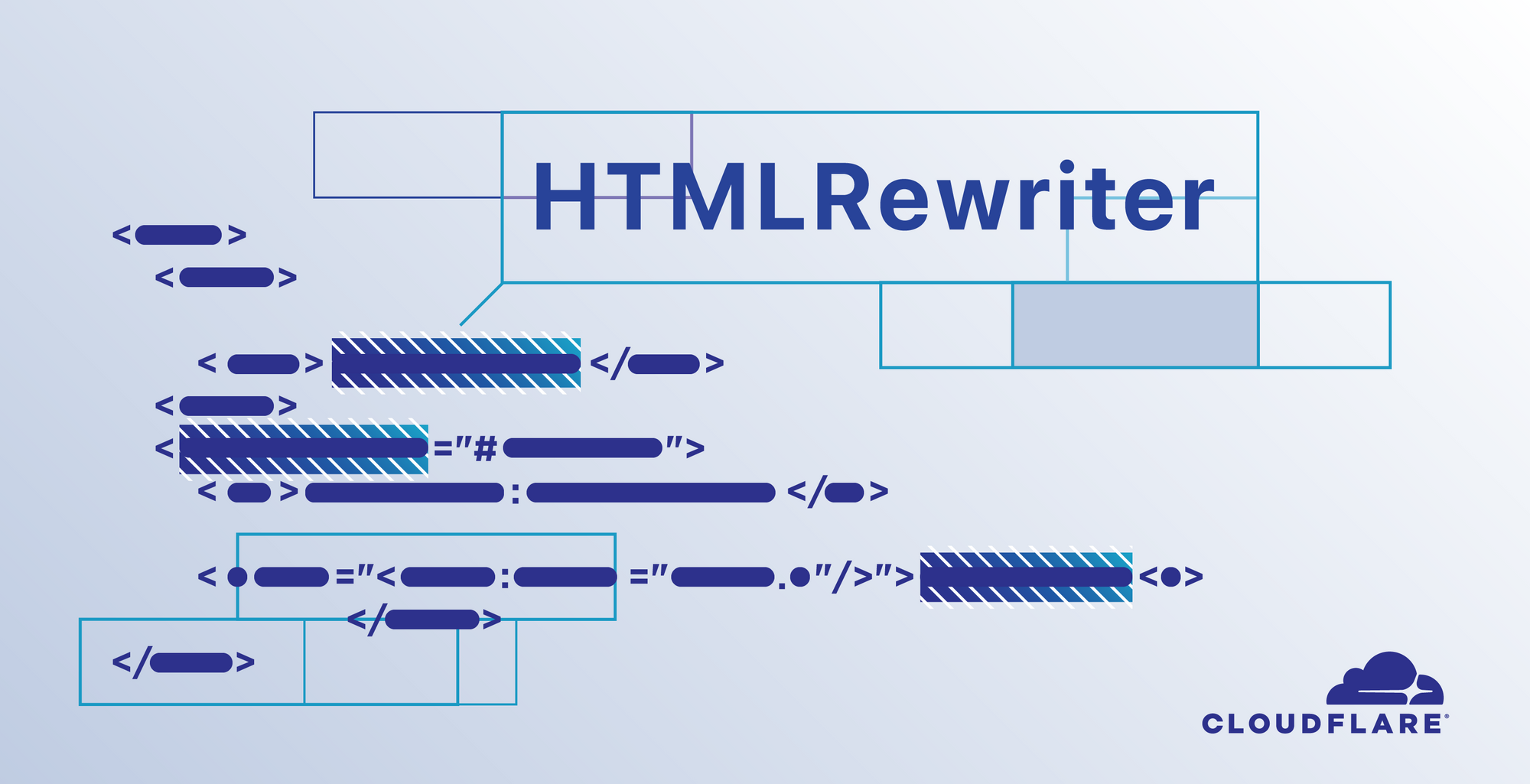
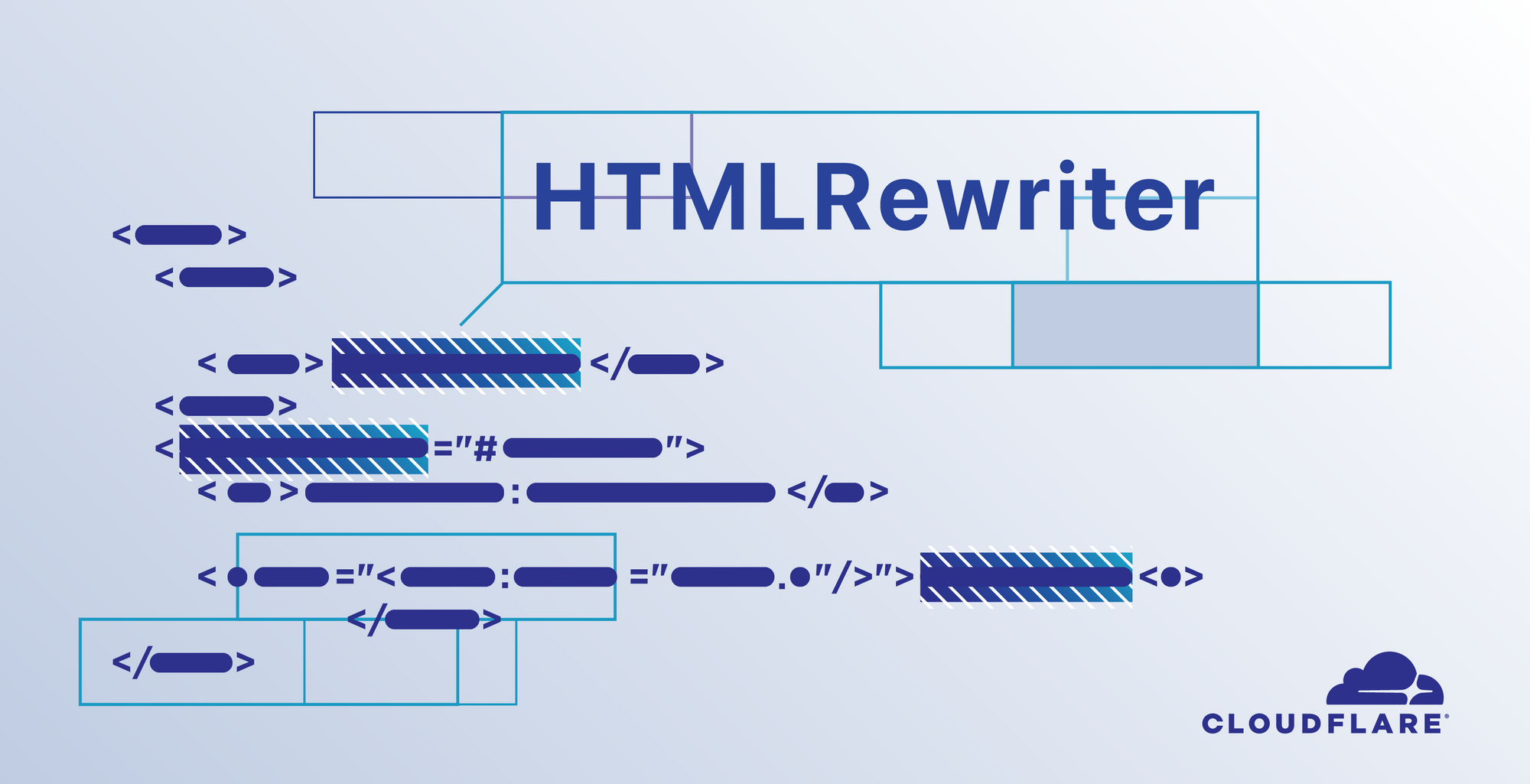
The second blog post in the series on HTML rewriters picks up the story in 2017 after the launch of the Cloudflare edge compute platform Cloudflare Workers. It became clear that the developers using workers wanted the same HTML rewriting capabilities that we used internally, but accessible via a JavaScript API.
This blog post describes the building of a streaming HTML rewriter/parser with a CSS-selector based API in Rust. It is used as the back-end for the Cloudflare Workers HTMLRewriter. We have open-sourced the library (LOL HTML) as it can also be used as a stand-alone HTML rewriting/parsing library.
The major change compared to LazyHTML, the previous rewriter, is the dual-parser architecture required to overcome the additional performance overhead of wrapping/unwrapping each token when propagating tokens to the workers runtime. The remainder of the post describes a CSS selector matching engine inspired by a Virtual Machine approach to regular expression matching.
v2 : Give it to everyone and make it faster
In 2017, Cloudflare introduced an edge compute platform - Cloudflare Workers. It was no surprise that customers quickly required the same HTML rewriting capabilities that we were using internally. Our team was impressed with the platform Continue reading
A History of HTML Parsing at Cloudflare: Part 1
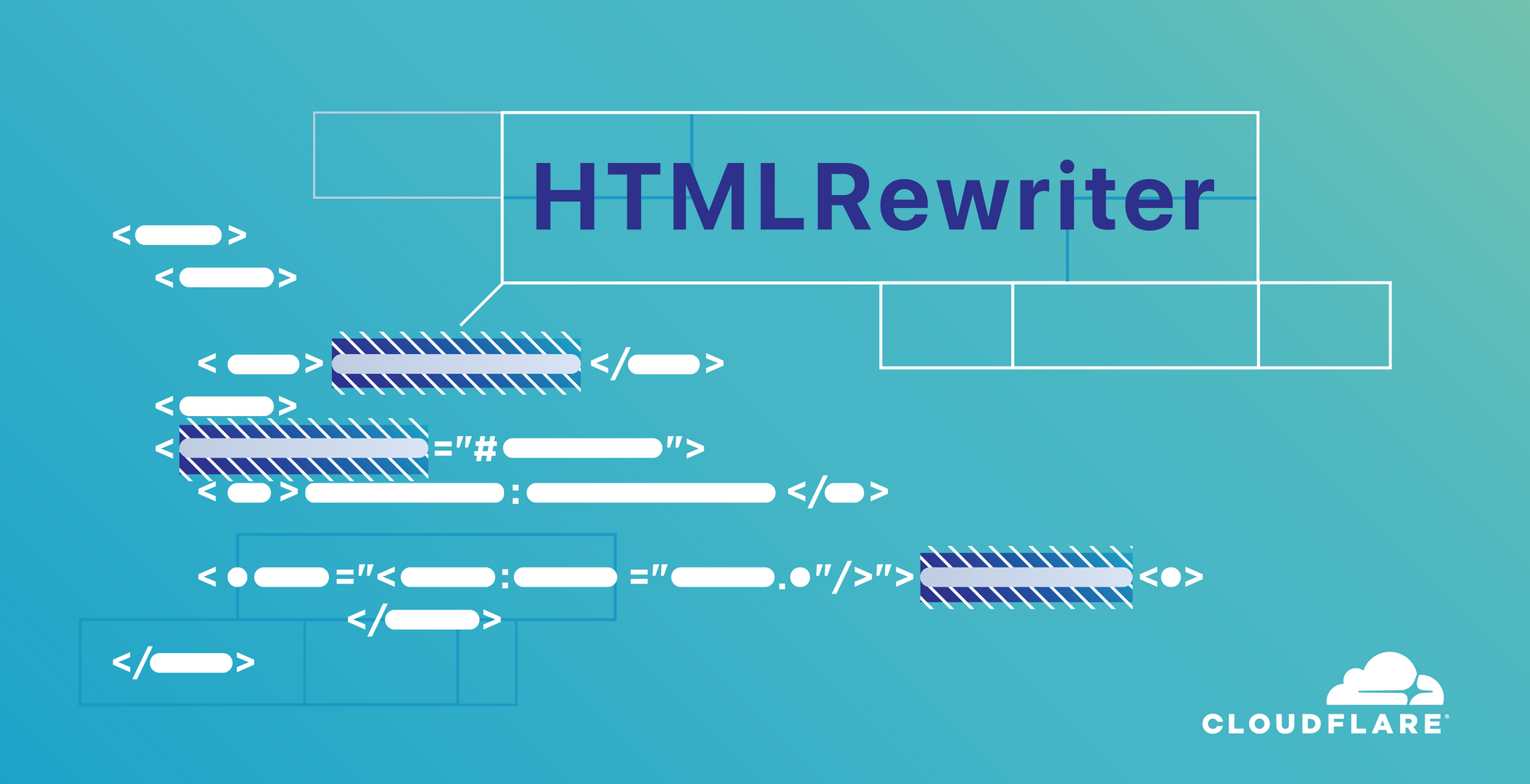
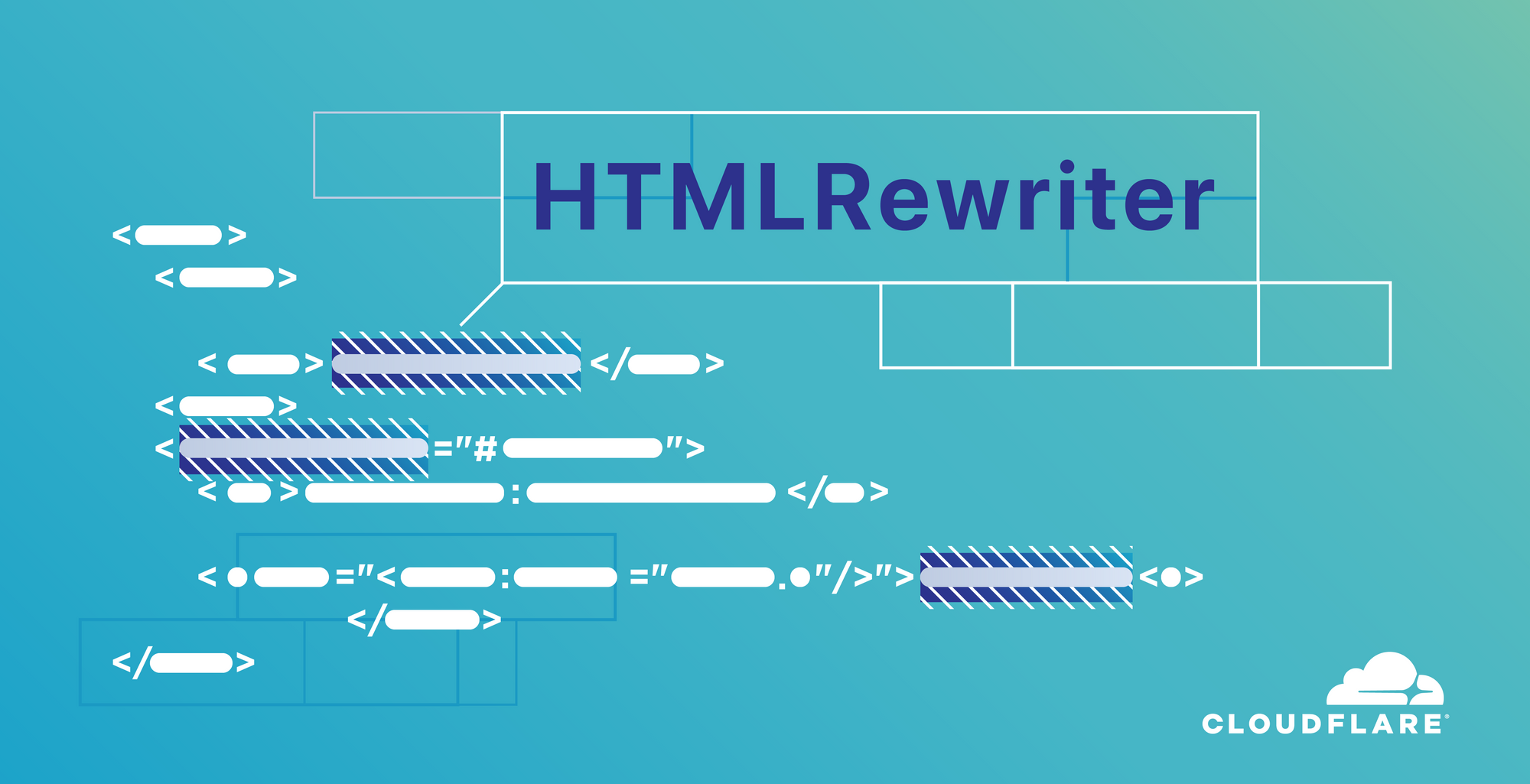
To coincide with the launch of streaming HTML rewriting functionality for Cloudflare Workers we are open sourcing the Rust HTML rewriter (LOL HTML) used to back the Workers HTMLRewriter API. We also thought it was about time to review the history of HTML rewriting at Cloudflare.
The first blog post will explain the basics of a streaming HTML rewriter and our particular requirements. We start around 8 years ago by describing the group of ‘ad-hoc’ parsers that were created with specific functionality such as to rewrite e-mail addresses or minify HTML. By 2016 the state machine defined in the HTML5 specification could be used to build a single spec-compliant HTML pluggable rewriter, to replace the existing collection of parsers. The source code for this rewriter is now public and available here: https://github.com/cloudflare/lazyhtml.
The second blog post will describe the next iteration of rewriter. With the launch of the edge compute platform Cloudflare Workers we came to realise that developers wanted the same HTML rewriting capabilities with a JavaScript API. The post describes the thoughts behind a low latency streaming HTML rewriter with a CSS-selector based API. We open-sourced the Rust library as it can also be used Continue reading
Introducing the HTMLRewriter API to Cloudflare Workers


We are excited to announce that the HTMLRewriter API for Cloudflare Workers is now GA! You can get started today by checking out our documentation, or trying out our tutorial for localizing your site with the HTMLRewriter.
Want to know how it works under the hood? We are excited to tell you everything you wanted to know but were afraid to ask, about building a streaming HTML parser on the edge; read about it in part 1 (and stay tuned for part two coming tomorrow!).
Faster, more scalable applications at the edge
The HTMLRewriter can help solve two big problems web developers face today: making changes to the HTML, when they are hard to make at the server level, and making it possible for HTML to live on the edge, closer to the user — without sacrificing dynamic functionality.
Since the introduction of Workers, Workers have helped customers regain control where control either wasn’t provided, or very hard to obtain at the origin level. Just like Workers can help you set CORS headers at the middleware layer, between your users and the origin, the HTMLRewriter can assist with things like URL rewrites (see the example below!).
Back Continue reading
Harnessing the Power of the People: Cloudflare’s First Security Awareness Month Design Challenge Winners

Grabbing the attention of employees at a security and privacy-focused company on security awareness presents a unique challenge; how do you get people who are already thinking about security all day to think about it some more? October marked Cloudflare’s first Security Awareness Month as a public company and to celebrate, the security team challenged our entire company population to create graphics, slogans, and memes to encourage us all to think and act more securely every day.
Employees approached this challenge with gusto; global participation meant plenty of high quality submissions to vote on. In addition to being featured here, the winning designs will be displayed in Cloudflare offices throughout 2020 and the creators will be on the decision panel for next year’s winners. Three rose to the top, highlighting creativity and style that is uniquely Cloudflarian. I sat down with the winners to talk through their thoughts on security and what all companies can do to drive awareness.
Eugene Wang, Design Team, First Place

Sílvia Flores, Executive Assistant, Second Place

Scott Jones, e-Learning Developer, Third Place
Security Haiku
Wipe that whiteboard clean
Visitors may come and see
Secrets not for them
No tailgating please
You may be a Continue reading
Introducing Flan Scan: Cloudflare’s Lightweight Network Vulnerability Scanner
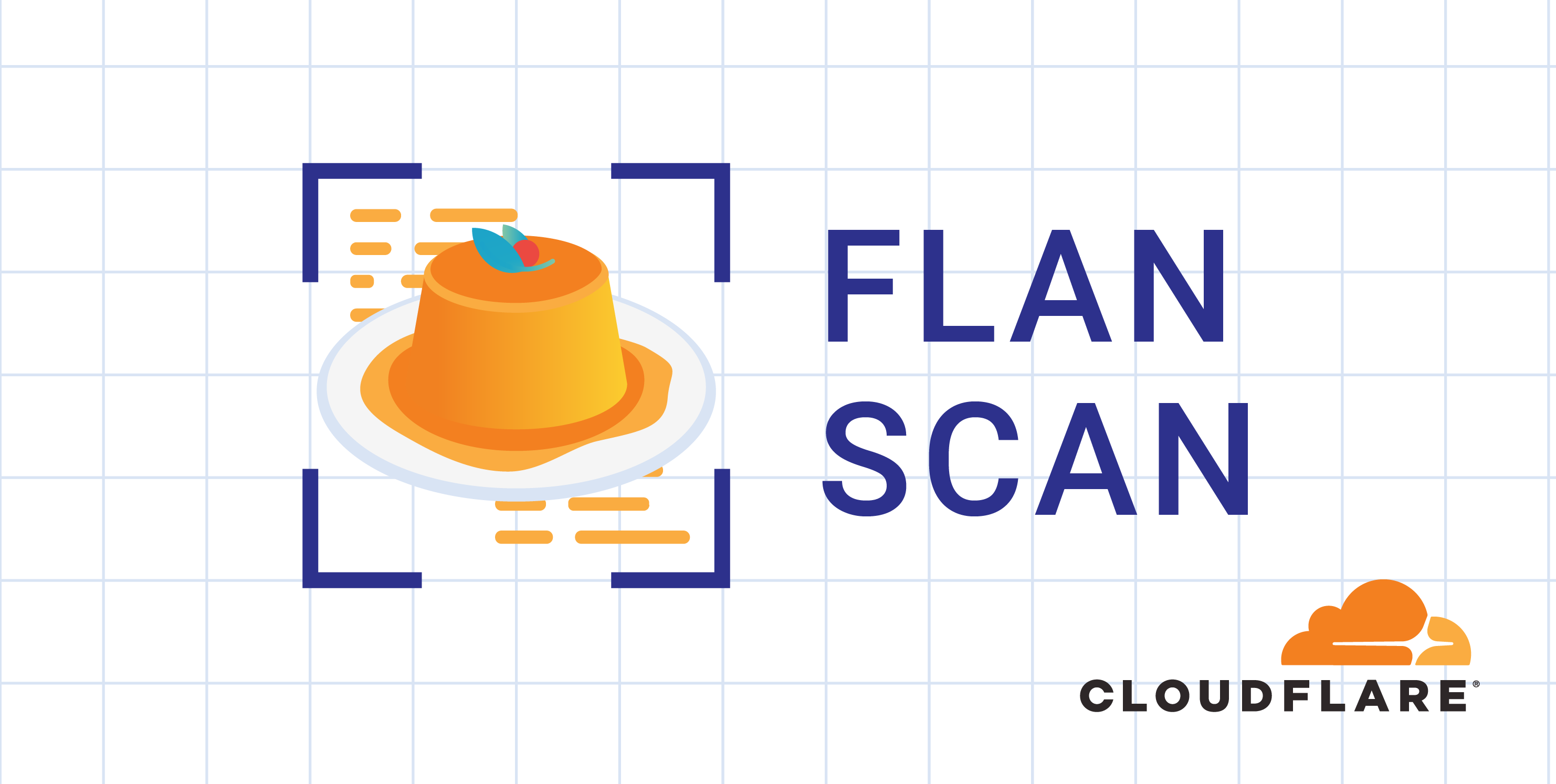
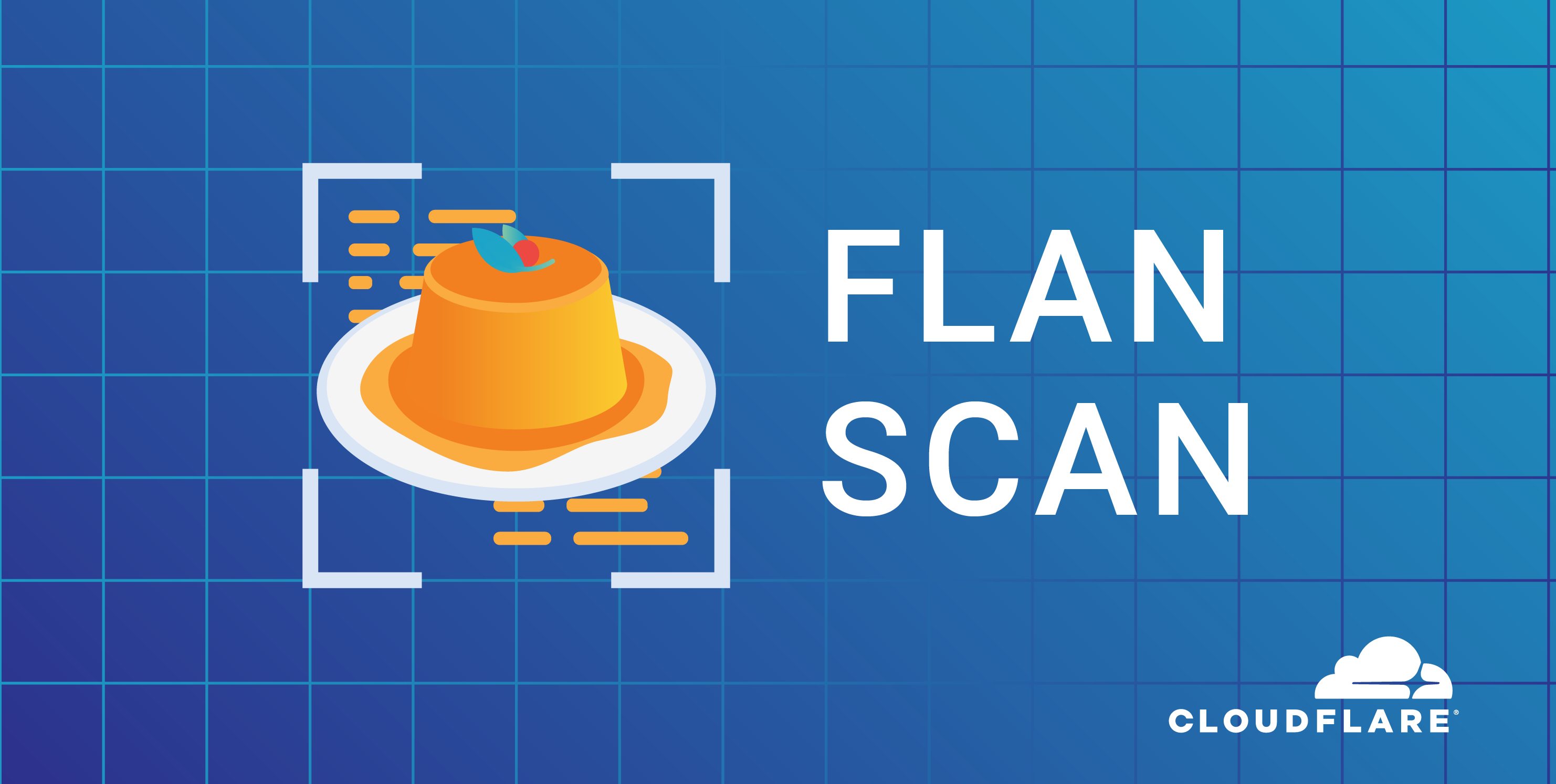
Today, we’re excited to open source Flan Scan, Cloudflare’s in-house lightweight network vulnerability scanner. Flan Scan is a thin wrapper around Nmap that converts this popular open source tool into a vulnerability scanner with the added benefit of easy deployment.
We created Flan Scan after two unsuccessful attempts at using “industry standard” scanners for our compliance scans. A little over a year ago, we were paying a big vendor for their scanner until we realized it was one of our highest security costs and many of its features were not relevant to our setup. It became clear we were not getting our money’s worth. Soon after, we switched to an open source scanner and took on the task of managing its complicated setup. That made it difficult to deploy to our entire fleet of more than 190 data centers.
We had a deadline at the end of Q3 to complete an internal scan for our compliance requirements but no tool that met our needs. Given our history with existing scanners, we decided to set off on our own and build a scanner that worked for our setup. To design Flan Scan, we worked closely with our auditors to understand Continue reading
Even faster connection establishment with QUIC 0-RTT resumption

One of the more interesting features introduced by TLS 1.3, the latest revision of the TLS protocol, was the so called “zero roundtrip time connection resumption”, a mode of operation that allows a client to start sending application data, such as HTTP requests, without having to wait for the TLS handshake to complete, thus reducing the latency penalty incurred in establishing a new connection.
The basic idea behind 0-RTT connection resumption is that if the client and server had previously established a TLS connection between each other, they can use information cached from that session to establish a new one without having to negotiate the connection’s parameters from scratch. Notably this allows the client to compute the private encryption keys required to protect application data before even talking to the server.
However, in the case of TLS, “zero roundtrip” only refers to the TLS handshake itself: the client and server are still required to first establish a TCP connection in order to be able to exchange TLS data.
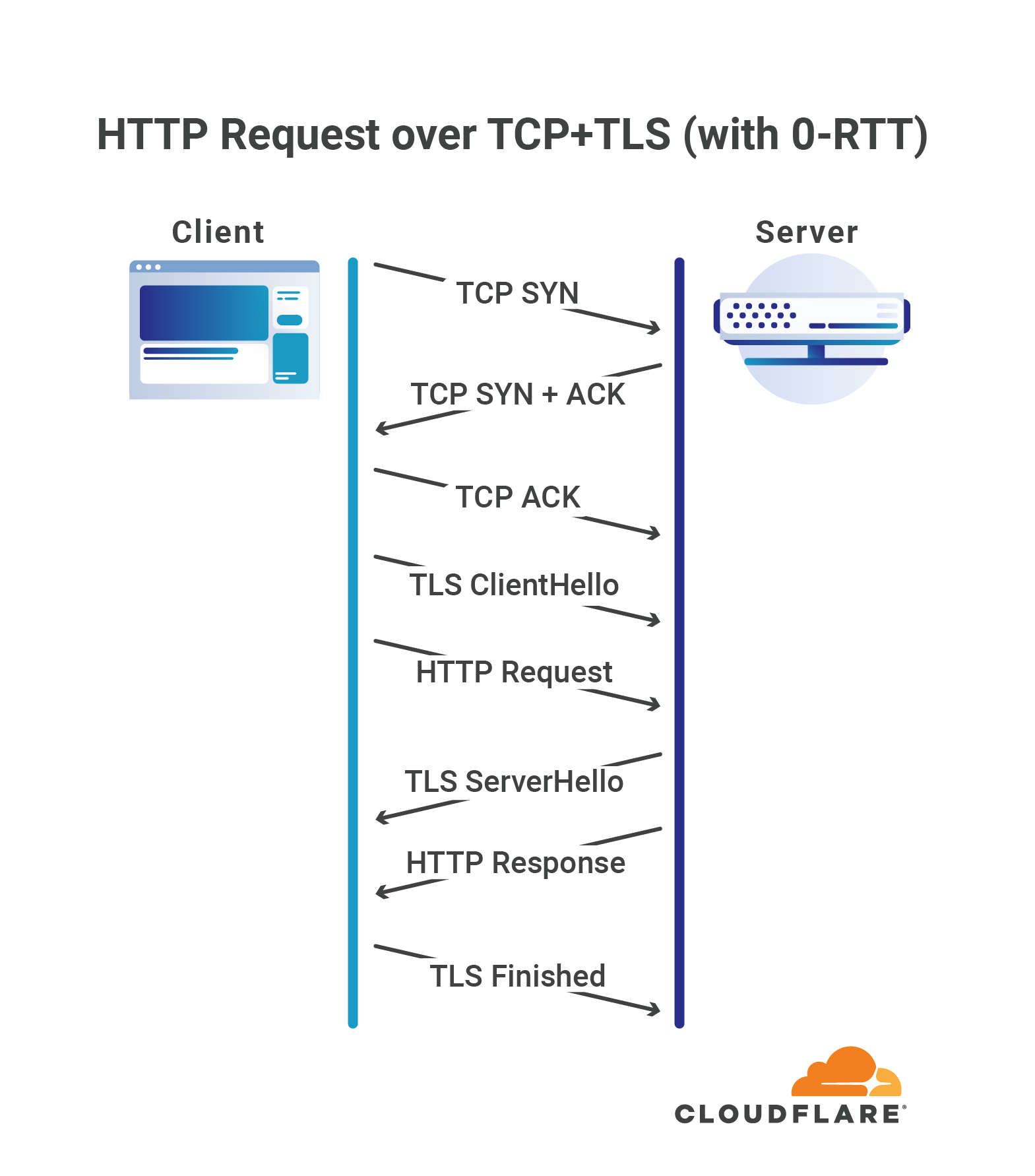
Zero means zero
QUIC goes a step further, and allows clients to send application data in the very first roundtrip of the connection, without requiring any other handshake to be Continue reading
Log every request to corporate apps, no code changes required
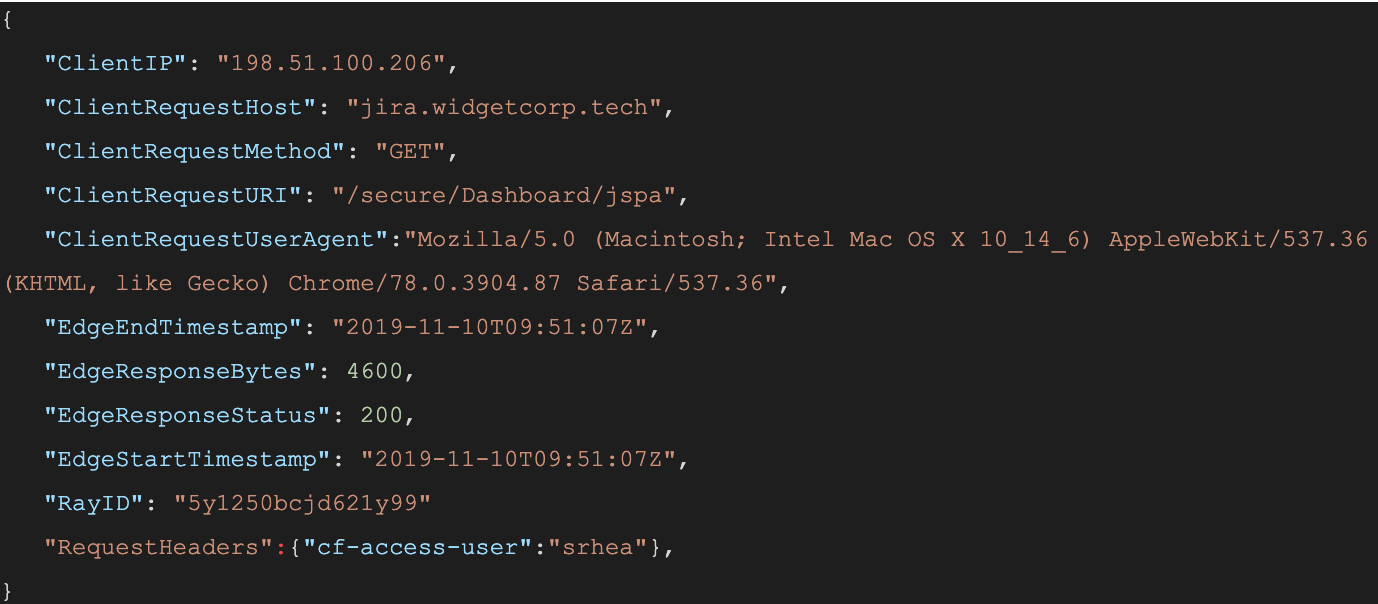
When a user connects to a corporate network through an enterprise VPN client, this is what the VPN appliance logs:
The administrator of that private network knows the user opened the door at 12:15:05, but, in most cases, has no visibility into what they did next. Once inside that private network, users can reach internal tools, sensitive data, and production environments. Preventing this requires complicated network segmentation, and often server-side application changes. Logging the steps that an individual takes inside that network is even more difficult.
Cloudflare Access does not improve VPN logging; it replaces this model. Cloudflare Access secures internal sites by evaluating every request, not just the initial login, for identity and permission. Instead of a private network, administrators deploy corporate applications behind Cloudflare using our authoritative DNS. Administrators can then integrate their team’s SSO and build user and group-specific rules to control who can reach applications behind the Access Gateway.
When a request is made to a site behind Access, Cloudflare prompts the visitor to login with an identity provider. Access then checks that user’s identity against the configured rules and, if permitted, allows the request to proceed. Access performs these checks on each request a user Continue reading
What’s new with Workers KV?
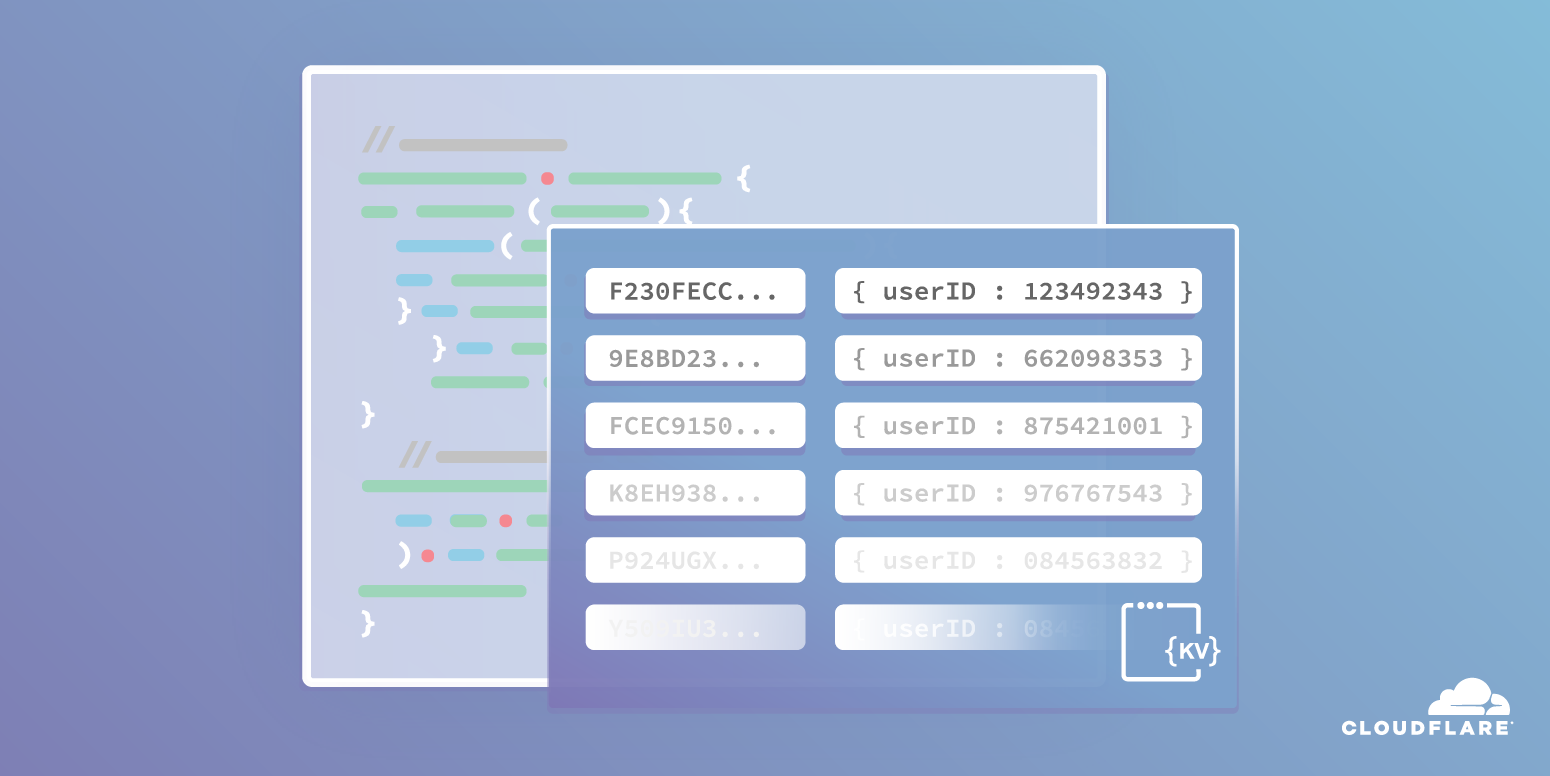

The Storage team here at Cloudflare shipped Workers KV, our global, low-latency, key-value store, earlier this year. As people have started using it, we’ve gotten some feature requests, and have shipped some new features in response! In this post, we’ll talk about some of these use cases and how these new features enable them.
New KV APIs
We’ve shipped some new APIs, both via api.cloudflare.com, as well as inside of a Worker. The first one provides the ability to upload and delete more than one key/value pair at once. Given that Workers KV is great for read-heavy, write-light workloads, a common pattern when getting started with KV is to write a bunch of data via the API, and then read that data from within a Worker. You can now do these bulk uploads without needing a separate API call for every key/value pair. This feature is available via api.cloudflare.com, but is not yet available from within a Worker.
For example, say we’re using KV to redirect legacy URLs to their new homes. We have a list of URLs to redirect, and where they should redirect to. We can turn this list into JSON that Continue reading
Serverlist October: GitHub Actions, Deployment Best Practices, and more

Check out our ninth edition of The Serverlist below. Get the latest scoop on the serverless space, get your hands dirty with new developer tutorials, engage in conversations with other serverless developers, and find upcoming meetups and conferences to attend.
Sign up below to have The Serverlist sent directly to your mailbox.
The Project Jengo Saga: How Cloudflare Stood up to a Patent Troll – and Won!


Remember 2016? Pokemon Go was all the rage, we lost Prince, and there were surprising election results in both the UK and US. Back in 2016, Blackbird Technologies was notorious in the world of patent litigation. It was a boutique law firm that was one of the top ten most active patent trolls, filing lawsuits against more than 50 different defendants in a single year.
In October 2016, Blackbird was looking to acquire additional patents for their portfolio when they found an incredibly broad software patent with the ambiguous title, “PROVIDING AN INTERNET THIRD PARTY DATA CHANNEL.” They acquired this patent from its owner for $1 plus “other good and valuable consideration.” A little later, in March 2017, Blackbird decided to assert that patent against Cloudflare.
As we have explained previously, patent trolls benefit from a problematic incentive structure that allows them to take vague or abstract patents that they have no intention of developing and assert them as broadly as possible. Instead, these trolls collect licensing fees or settlements from companies who are otherwise trying to start a business, produce useful products, and create good jobs. Companies facing such claims usually convince themselves that settlements Continue reading
Going Keyless Everywhere
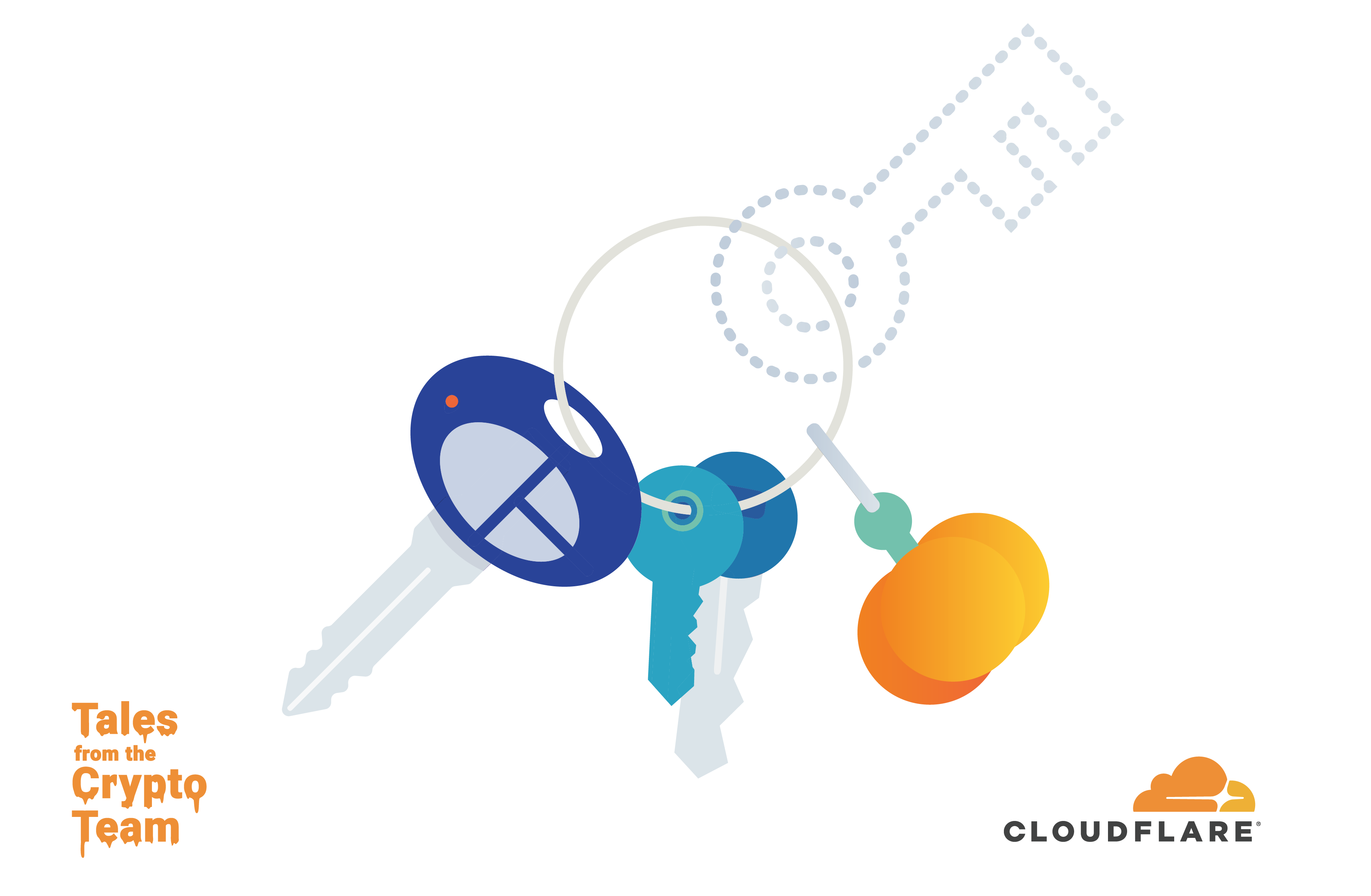
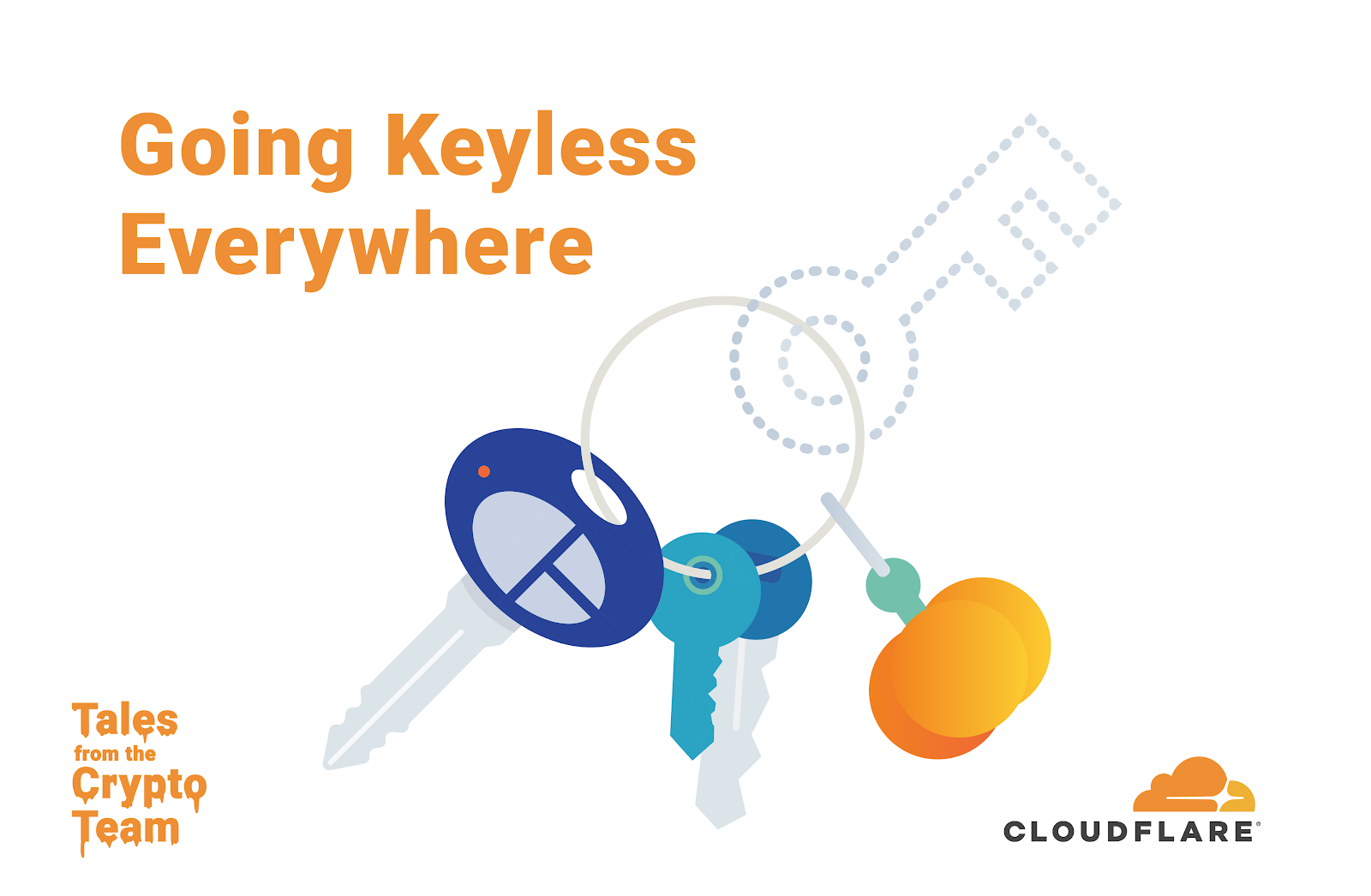
Time flies. The Heartbleed vulnerability was discovered just over five and a half years ago. Heartbleed became a household name not only because it was one of the first bugs with its own web page and logo, but because of what it revealed about the fragility of the Internet as a whole. With Heartbleed, one tiny bug in a cryptography library exposed the personal data of the users of almost every website online.
Heartbleed is an example of an underappreciated class of bugs: remote memory disclosure vulnerabilities. High profile examples other than Heartbleed include Cloudbleed and most recently NetSpectre. These vulnerabilities allow attackers to extract secrets from servers by simply sending them specially-crafted packets. Cloudflare recently completed a multi-year project to make our platform more resilient against this category of bug.
For the last five years, the industry has been dealing with the consequences of the design that led to Heartbleed being so impactful. In this blog post we’ll dig into memory safety, and how we re-designed Cloudflare’s main product to protect private keys from the next Heartbleed.
Memory Disclosure
Perfect security is not possible for businesses with an online component. History has shown us that no matter how Continue reading
Delegated Credentials for TLS
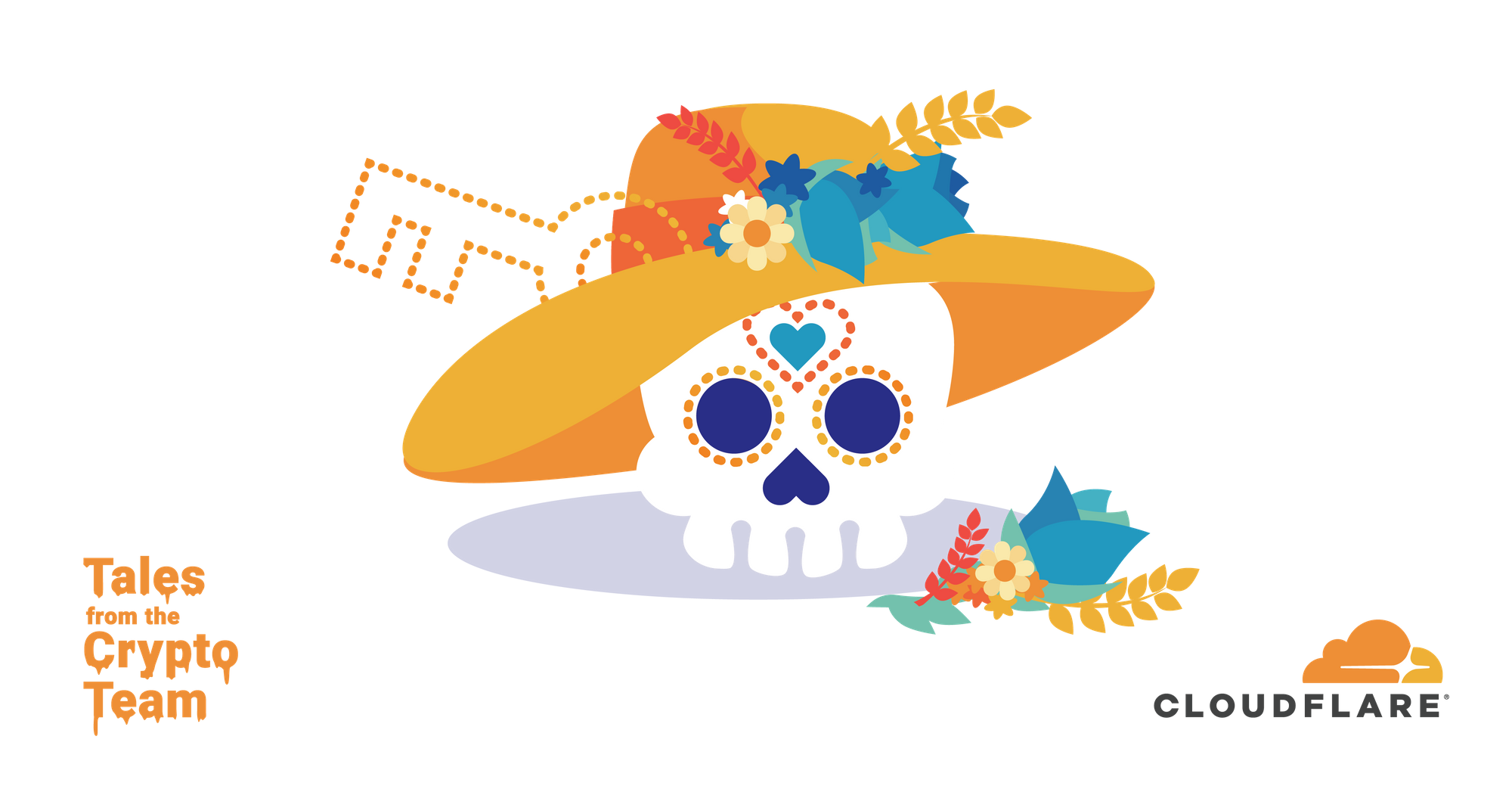
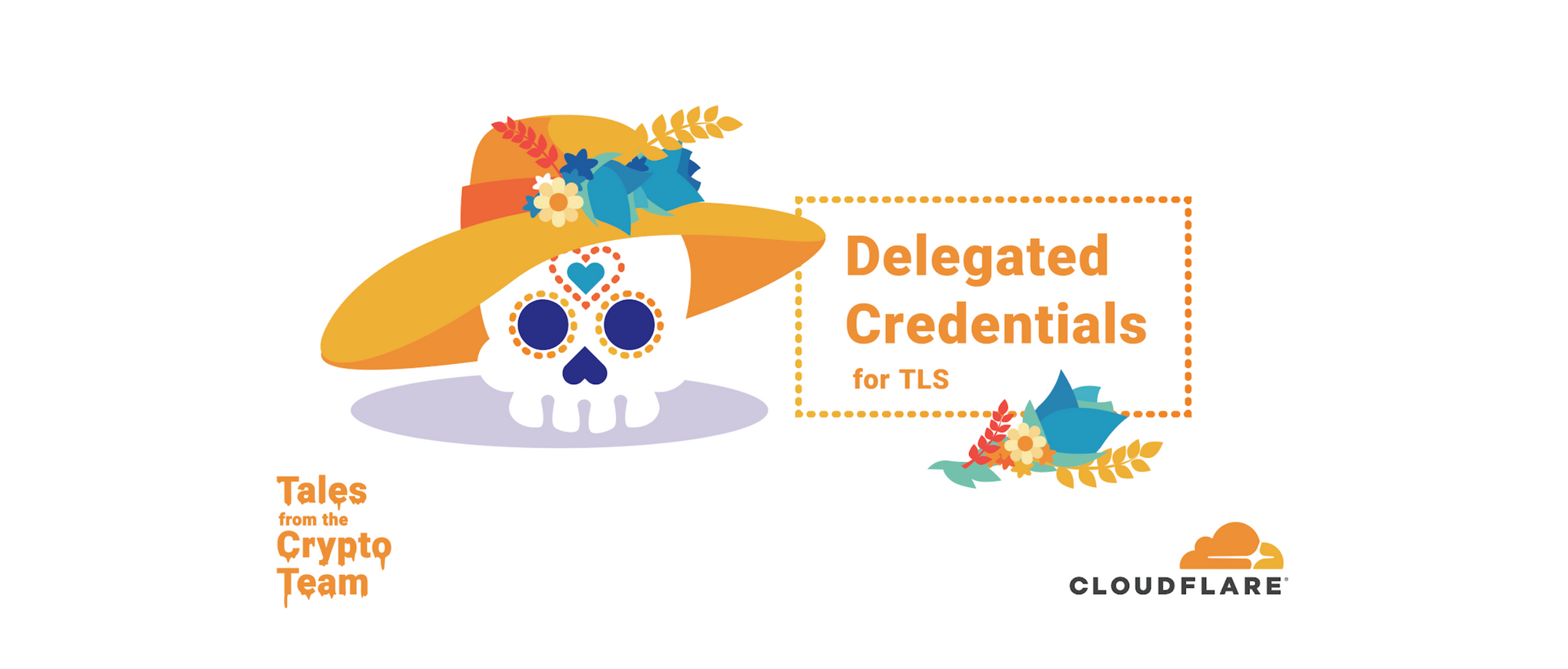
Today we’re happy to announce support for a new cryptographic protocol that helps make it possible to deploy encrypted services in a global network while still maintaining fast performance and tight control of private keys: Delegated Credentials for TLS. We have been working with partners from Facebook, Mozilla, and the broader IETF community to define this emerging standard. We’re excited to share the gory details today in this blog post.
Also, be sure to check out the blog posts on the topic by our friends at Facebook and Mozilla!
Deploying TLS globally
Many of the technical problems we face at Cloudflare are widely shared problems across the Internet industry. As gratifying as it can be to solve a problem for ourselves and our customers, it can be even more gratifying to solve a problem for the entire Internet. For the past three years, we have been working with peers in the industry to solve a specific shared problem in the TLS infrastructure space: How do you terminate TLS connections while storing keys remotely and maintaining performance and availability? Today we’re announcing that Cloudflare now supports Delegated Credentials, the result of this work.
Cloudflare’s TLS/SSL features are among the top reasons Continue reading
Announcing cfnts: Cloudflare’s implementation of NTS in Rust
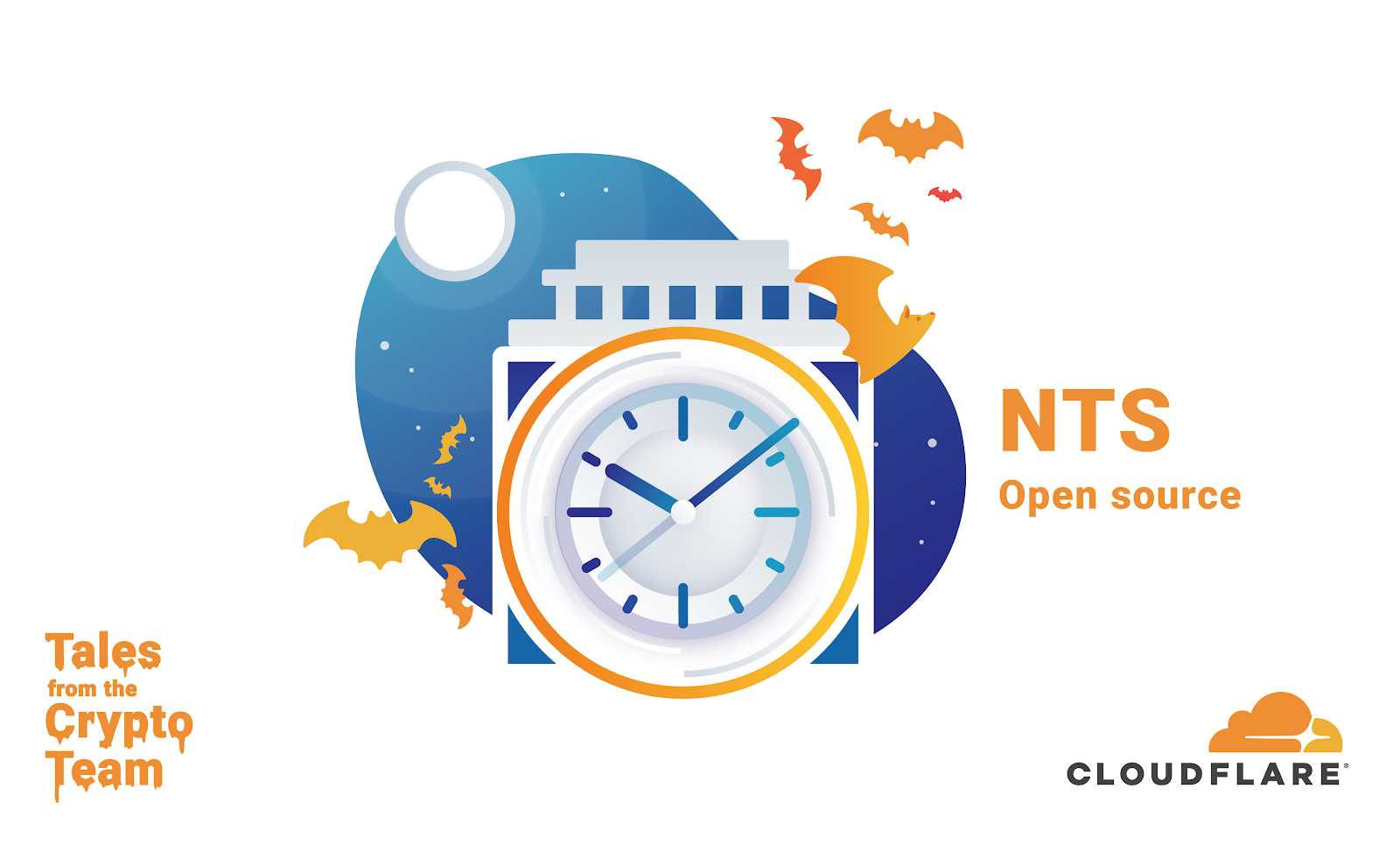

Several months ago we announced that we were providing a new public time service. Part of what we were providing was the first major deployment of the new Network Time Security (NTS) protocol, with a newly written implementation of NTS in Rust. In the process, we received helpful advice from the NTP community, especially from the NTPSec and Chrony projects. We’ve also participated in several interoperability events. Now we are returning something to the community: Our implementation, cfnts, is now open source and we welcome your pull requests and issues.
The journey from a blank source file to a working, deployed service was a lengthy one, and it involved many people across multiple teams.
"Correct time is a necessity for most security protocols in use on the Internet. Despite this, secure time transfer over the Internet has previously required complicated configuration on a case by case basis. With the introduction of NTS, secure time synchronization will finally be available for everyone. It is a small, but important, step towards increasing security in all systems that depend on accurate time. I am happy that Cloudflare are sharing their NTS implementation. A diversity of software with NTS support is important for quick Continue reading
The TLS Post-Quantum Experiment
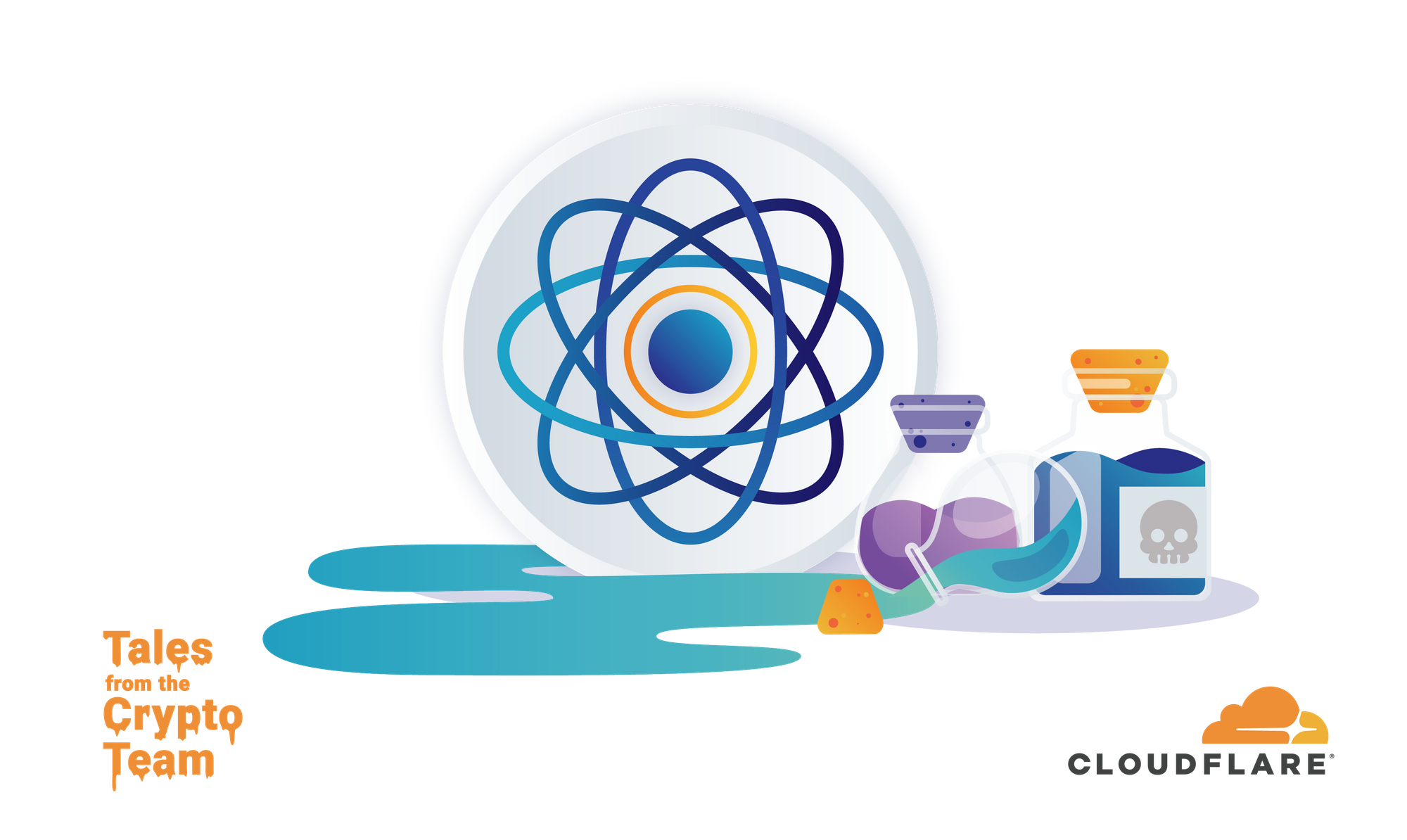
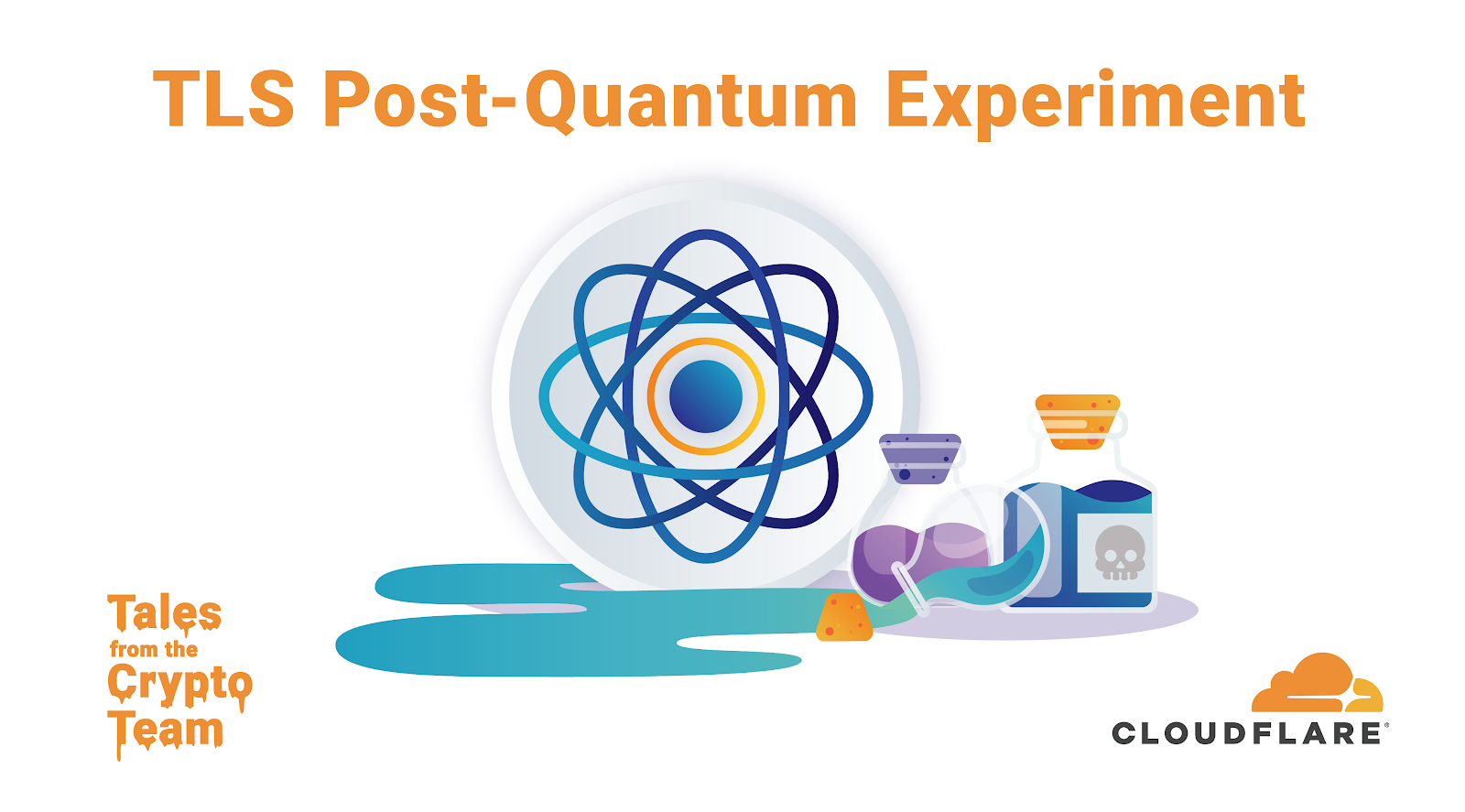
In June, we announced a wide-scale post-quantum experiment with Google. We implemented two post-quantum (i.e., not yet known to be broken by quantum computers) key exchanges, integrated them into our TLS stack and deployed the implementation on our edge servers and in Chrome Canary clients. The goal of the experiment was to evaluate the performance and feasibility of deployment in TLS of two post-quantum key agreement ciphers.
In our previous blog post on post-quantum cryptography, we described differences between those two ciphers in detail. In case you didn’t have a chance to read it, we include a quick recap here. One characteristic of post-quantum key exchange algorithms is that the public keys are much larger than those used by "classical" algorithms. This will have an impact on the duration of the TLS handshake. For our experiment, we chose two algorithms: isogeny-based SIKE and lattice-based HRSS. The former has short key sizes (~330 bytes) but has a high computational cost; the latter has larger key sizes (~1100 bytes), but is a few orders of magnitude faster.
During NIST’s Second PQC Standardization Conference, Nick Sullivan presented our approach to this experiment and some initial results. Quite accurately, Continue reading
DNS Encryption Explained

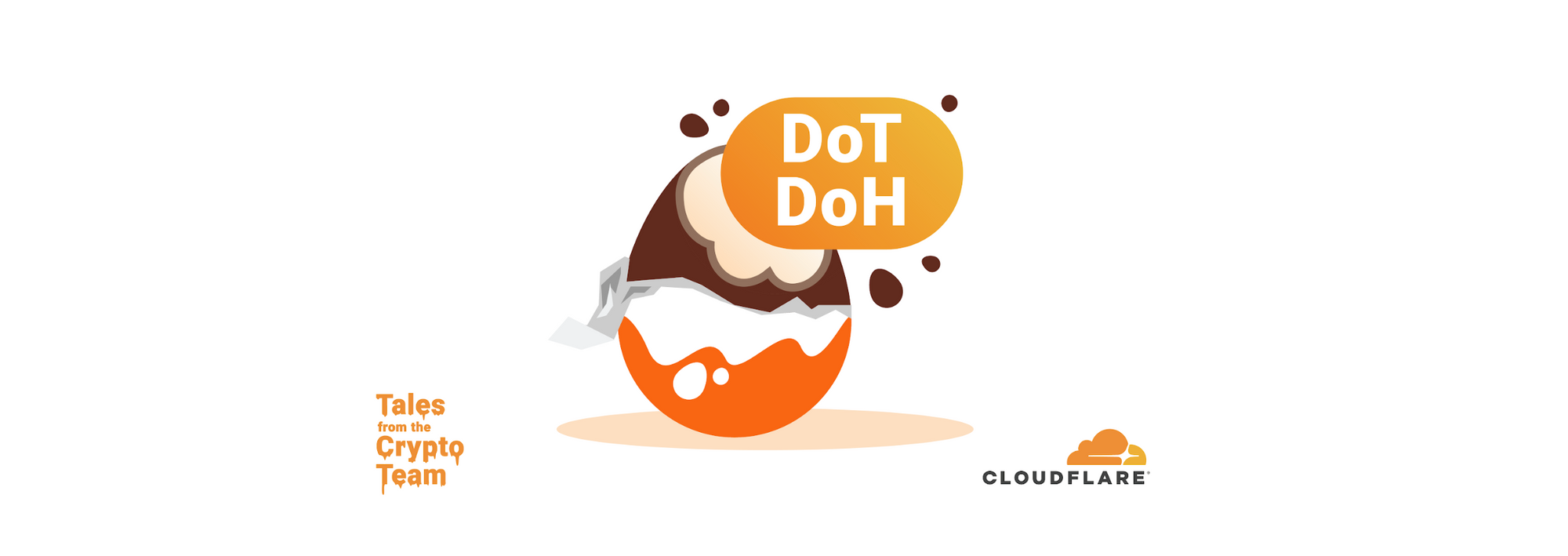
The Domain Name System (DNS) is the address book of the Internet. When you visit cloudflare.com or any other site, your browser will ask a DNS resolver for the IP address where the website can be found. Unfortunately, these DNS queries and answers are typically unprotected. Encrypting DNS would improve user privacy and security. In this post, we will look at two mechanisms for encrypting DNS, known as DNS over TLS (DoT) and DNS over HTTPS (DoH), and explain how they work.
Applications that want to resolve a domain name to an IP address typically use DNS. This is usually not done explicitly by the programmer who wrote the application. Instead, the programmer writes something such as fetch("https://example.com/news") and expects a software library to handle the translation of “example.com” to an IP address.
Behind the scenes, the software library is responsible for discovering and connecting to the external recursive DNS resolver and speaking the DNS protocol (see the figure below) in order to resolve the name requested by the application. The choice of the external DNS resolver and whether any privacy and security is provided at all is outside the control of the application. It depends on Continue reading
50 Years of The Internet. Work in Progress to a Better Internet
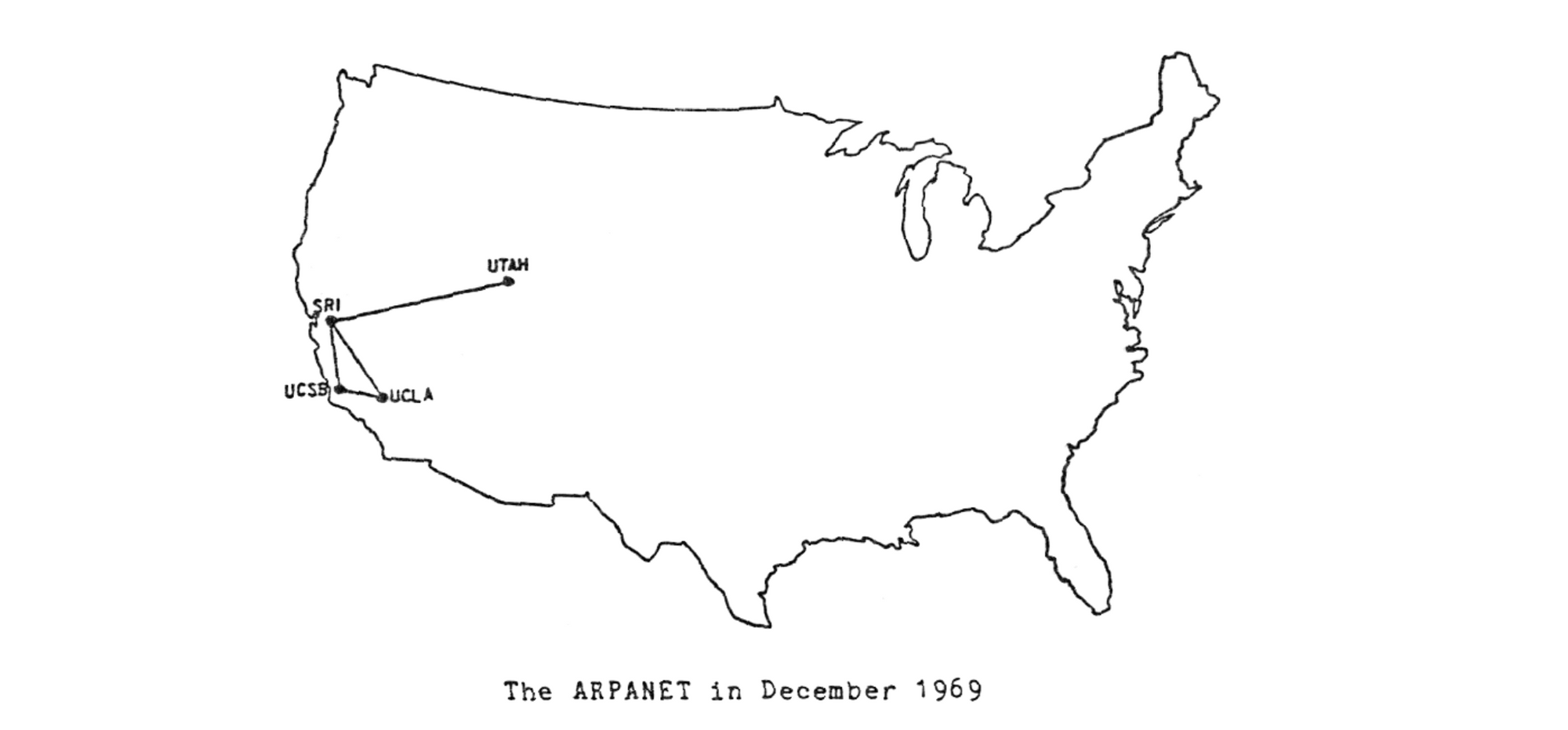
It was fifty years ago when the very first network packet took flight from the Los Angeles campus at UCLA to the Stanford Research Institute (SRI) building in Palo Alto. Those two California sites had kicked-off the world of packet networking, of the Arpanet, and of the modern Internet as we use and know it today. Yet by the time the third packet had been transmitted that evening, the receiving computer at SRI had crashed. The “L” and “O” from the word “LOGIN” had been transmitted successfully in their packets; but that “G”, wrapped in its own packet, caused the death of that nascent packet network setup. Even today, software crashes, that’s a solid fact; but this historic crash, is exactly that — historic.

So much has happened since that day (October 29’th to be exact) in 1969, in fact it’s an understatement to say “so much has happened”! It’s unclear that one blog article would ever be able to capture the full history of packets from then to now. Here at Cloudflare we say we are helping build a “better Internet”, so it would make perfect sense for us to Continue reading
Fifty Years Ago

This is a guest post by Steve Crocker of Shinkuro, Inc. and Bill Duvall of Consulair. Fifty years ago they were both present when the first packets flowed on the Arpanet.
On 29 October 2019, Professor Leonard (“Len”) Kleinrock is chairing a celebration at the University of California, Los Angeles (UCLA). The date is the fiftieth anniversary of the first full system test and remote host-to-host login over the Arpanet. Following a brief crash caused by a configuration problem, a user at UCLA was able to log in to the SRI SDS 940 time-sharing system. But let us paint the rest of the picture.
The Arpanet was a bold project to connect sites within the ARPA-funded computer science research community and to use packet-switching as the technology for doing so. Although there were parallel packet-switching research efforts around the globe, none were at the scale of the Arpanet project. Cooperation among researchers in different laboratories, applying multiple machines to a single problem and sharing of resources were all part of the vision. And over the fifty years since then, the vision has been fulfilled, albeit with some undesired outcomes mixed in with the enormous benefits. However, in this blog, we Continue reading